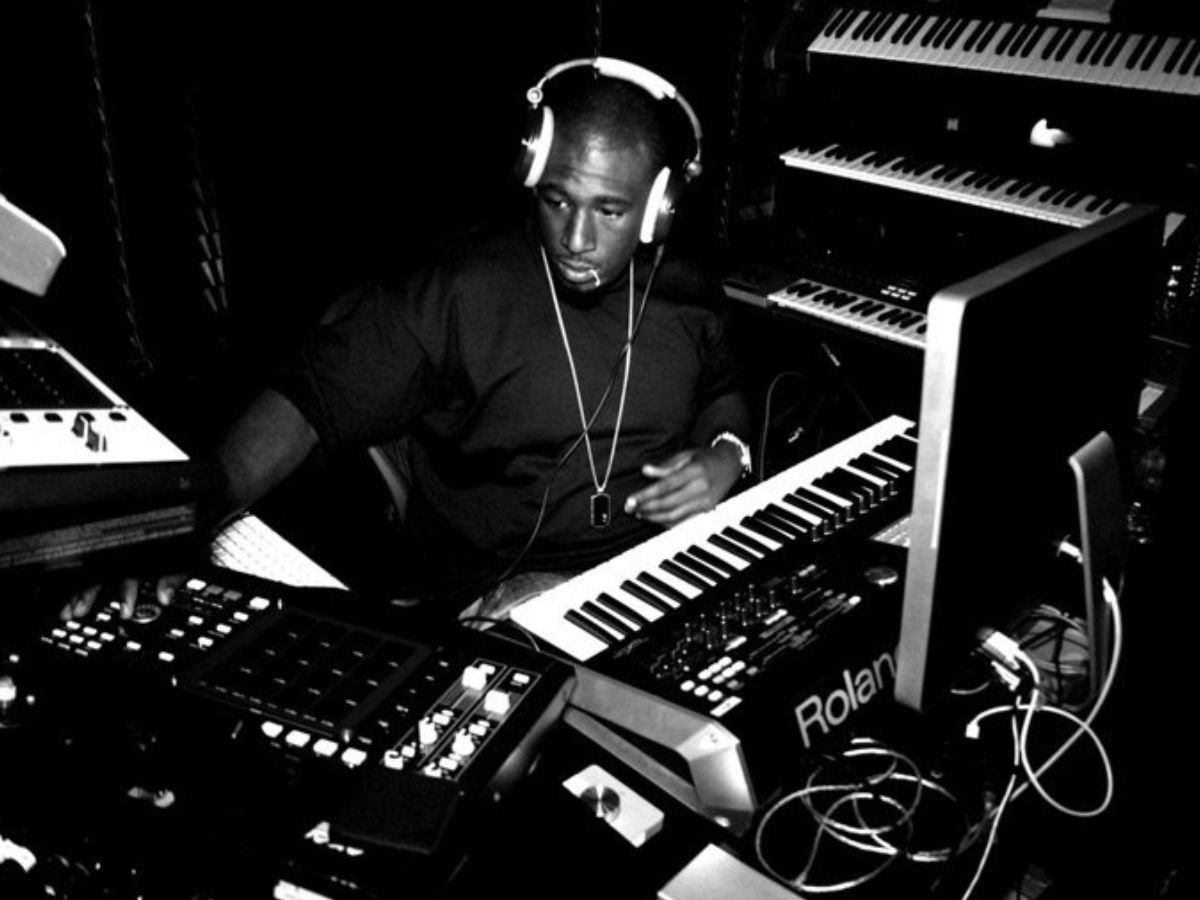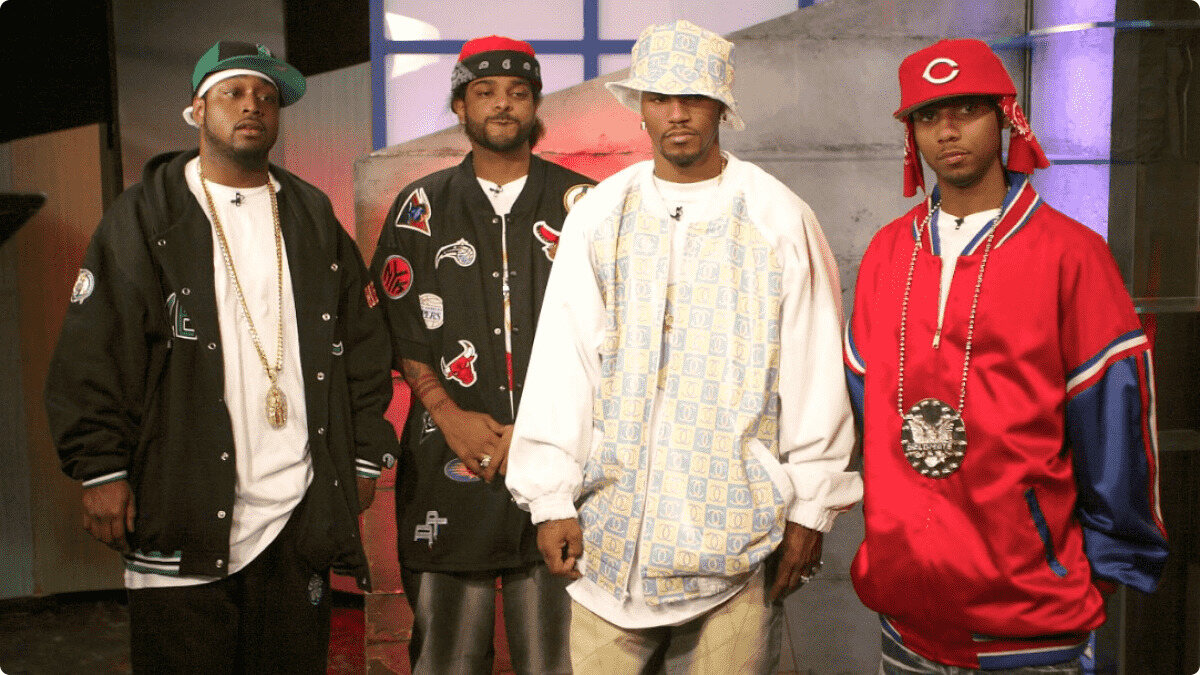

Hip Hop
How To Sell Hip Hop Beats
Published: December 31, 2023
Learn the best strategies and techniques for selling hip hop beats online. Increase your profits and reach a wider audience with our step-by-step guide.
(Many of the links in this article redirect to a specific reviewed product. Your purchase of these products through affiliate links helps to generate commission for AudioLover.com, at no extra cost. Learn more)
Table of Contents
- Introduction
- Understanding the Market for Hip Hop Beats
- Creating High-Quality Hip Hop Beats
- Setting the Right Price for Your Beats
- Promoting and Marketing Your Beats
- Negotiating and Closing the Sale
- Delivering Beats to Customers
- Building and Maintaining Relationships with Artists
- Protecting Your Beats and Intellectual Property
- Conclusion
Introduction
Hip Hop has been a driving force in music culture for decades, and its popularity continues to soar. As the genre evolves and technology advances, the demand for high-quality hip hop beats is higher than ever. For aspiring producers and beatmakers, this presents a lucrative opportunity to sell their creations to artists and musicians.
However, breaking into the hip hop beat selling market can be a daunting task. With so much competition and a saturated market, it’s essential to have a strategic approach and a deep understanding of the industry. In this article, we will explore the key steps to successfully selling hip hop beats.
From creating standout beats to setting the right price, promoting your work, and building relationships with artists, we will cover the essential aspects of selling hip hop beats. Additionally, we will discuss protecting your intellectual property and maintaining a strong reputation in the industry.
Whether you’re a seasoned beatmaker looking to expand your business or a beginner taking the first steps in the industry, this guide will provide you with valuable insights and actionable tips to help you navigate the world of selling hip hop beats.
So, let’s dive in and discover how you can turn your passion for hip hop into a profitable venture by successfully selling your beats.
Understanding the Market for Hip Hop Beats
Before you start selling hip hop beats, it’s crucial to have a deep understanding of the market you’re entering. The hip hop music industry is multifaceted and constantly evolving, so staying informed about current trends and the preferences of artists is essential. Here are a few key factors to consider:
- Genre Diversity: Hip hop encompasses a wide range of subgenres, such as trap, boom bap, lo-fi, and more. Understanding the nuances and differences between these styles will help you tailor your beats to specific artist preferences.
- Target Audience: Determine the type of artists you want to target with your beats. Are you aiming for mainstream rappers, up-and-coming artists, or a niche market? Identifying your target audience will help you create beats that resonate with them.
- Quality Standards: The hip hop industry demands high-quality production. Invest in top-notch equipment and software to ensure your beats stand out from the competition.
- Stay Up-to-Date: Stay current with the latest trends in the industry, including new production techniques and popular drum patterns. This knowledge will enable you to create beats that are in line with the current sound.
Additionally, it’s essential to research other beatmakers and producers in the industry. Analyze their style, pricing, and marketing strategies to gain insights and inspiration for your own business. By understanding what works for others, you can tweak your approach to stand out from the crowd.
Remember that the hip hop beat market is highly competitive, so finding your unique selling point is crucial. Whether it’s a distinct sound, a signature production technique, or a strong professional network, differentiate yourself from the competition to attract artists to your beats.
By thoroughly understanding the market for hip hop beats, you’ll be equipped with the knowledge needed to create beats that resonate with artists and have a higher chance of selling.
Creating High-Quality Hip Hop Beats
When it comes to selling hip hop beats, quality is paramount. Artists are constantly on the lookout for beats that complement their style and elevate their music. Here are some essential tips to help you create high-quality hip hop beats:
- Master Your Craft: Continuously work on improving your production skills. Study different genres, learn new techniques, and experiment with sounds to develop a unique style that sets you apart.
- Focus on Sound Selection: Choose sounds that work well together and create a cohesive sound palette. Pay attention to the mix and make sure each element shines while allowing enough room for the artist to add their vocals.
- Drum Programming: Hip hop beats rely heavily on the drums. Experiment with different drum patterns and rhythms to create engaging and infectious grooves.
- Add Melodic Elements: Incorporate captivating melodies, catchy hooks, and memorable chord progressions to make your beats stand out. This will give artists a strong foundation to craft their lyrics and melodies.
- Pay Attention to Arrangement: Ensure that your beat progresses naturally and has enough variation to keep the listener engaged. Experiment with different sections, transitions, and breakdowns to create dynamic arrangements.
- Mix and Master Professionally: Invest time in mixing your beats properly to ensure a balanced and polished sound. Consider outsourcing the mastering process to an expert to achieve that final touch of professionalism.
Remember to stay true to your own artistic vision while also being open to collaboration. Artists often appreciate producers who are willing to listen to their ideas and incorporate them into the beats. Building strong relationships with artists starts with creating beats that resonate with them and showcase your talent as a producer.
Lastly, always strive for innovation and experimentation. The hip hop industry thrives on fresh and unique sounds, so don’t be afraid to push boundaries and think outside the box.
By creating high-quality hip hop beats, you’ll not only attract artists but also establish yourself as a reputable and sought-after producer in the industry.
Setting the Right Price for Your Beats
One of the crucial aspects of selling hip hop beats is determining the right price. Pricing your beats too high may deter potential buyers, while underpricing them could undervalue your work. Here are some factors to consider when setting the price for your beats:
- Market Research: Research the current market rates for hip hop beats. Take into account the prices charged by established beatmakers and producers with a similar level of experience and quality. This will give you a benchmark to work with.
- Beat Exclusivity: Determine whether you will offer exclusive rights to the beat or sell it as a non-exclusive lease. Exclusive rights give the buyer full ownership, allowing them to use the beat exclusively for their projects. Non-exclusive leases allow multiple artists to use the beat for a limited period. The exclusivity and usage rights will affect the price.
- Beat Complexity and Quality: Consider the complexity and uniqueness of your beats. Beats that exhibit intricate arrangements, exceptional sound design, and high production value should be priced higher than simpler beats.
- Your Reputation and Demand: If you have an established reputation in the industry and a high demand for your beats, you can consider pricing them a bit higher. Artists are often willing to pay more for beats from well-known producers.
- Bundle Deals and Discounts: Offer bundle deals or discounts for artists who purchase multiple beats. This encourages artists to buy more beats from you and can help boost your overall sales.
It’s essential to strike a balance between pricing your beats competitively while also ensuring you’re compensated fairly for your time, effort, and talent. Don’t undervalue your work, as it sets a precedent for the value of your beats in the market.
Be open to adjusting your prices over time based on feedback, demand, and market trends. Monitor the sales of your beats and gather feedback from customers to determine if your pricing strategy is effective.
Remember, setting the right price for your beats is a delicate balance between being competitive in the market and valuing your own skills and creativity.
Promoting and Marketing Your Beats
In a crowded market, promoting and marketing your beats is essential to attract potential buyers and stand out from the competition. Here are some effective strategies to promote and market your beats:
- Create a Professional Website: Build a professional website that showcases your beats, provides information about your services, and allows artists to easily browse and purchase your beats. Make sure the website is visually appealing, user-friendly, and optimized for mobile devices.
- Utilize Social Media: Leverage the power of social media platforms like Instagram, Twitter, Facebook, and YouTube to showcase your beats. Consistently post high-quality content, including snippets of your beats, behind-the-scenes videos, and collaborations with artists. Engage with your audience, respond to comments, and establish a strong online presence.
- Collaborate with Artists: Work with up-and-coming artists, both locally and online, to create joint projects or feature your beats on their tracks. This collaboration exposes your beats to a broader audience and can help establish your credibility in the industry.
- Use SoundCloud and YouTube: SoundCloud and YouTube are popular platforms for sharing and discovering music. Upload your beats to these platforms, optimize the titles and descriptions with relevant keywords, and engage with the community by commenting on tracks and connecting with fellow artists.
- Offer Free Downloads or Leases: Provide a few high-quality beats as free downloads or offer lease options at discounted rates. This strategy attracts new artists who may be hesitant to invest in your beats initially but can become potential customers in the future.
- Network in the Industry: Attend music events, industry conferences, and producer showcases to connect with artists, managers, and industry professionals. Building strong relationships in the industry can lead to new collaborations and opportunities to sell your beats.
- Utilize Email Marketing: Build an email list of artists and fans who are interested in your beats. Send regular newsletters with updates, new beat releases, and exclusive offers to keep them engaged and encourage repeat business.
Consistency is key when it comes to promoting your beats. Be consistent with your branding, content posting schedule, and interactions with artists and fans. Engage in strategic marketing campaigns, collaborate with influencers, and leverage paid advertising platforms if your budget allows.
Remember, marketing your beats is an ongoing process. Continuously evaluate the effectiveness of your strategies, track your sales and analytics, and make adjustments as needed to maximize your reach and visibility in the market.
By effectively promoting and marketing your beats, you’ll increase your chances of reaching a wider audience and attracting more sales.
Negotiating and Closing the Sale
When it comes to selling hip hop beats, negotiating and closing the sale requires effective communication and a professional approach. Here are some key tips to navigate the negotiation process and successfully close the sale:
- Listen to the Artist: Start by understanding the needs and vision of the artist. Take the time to listen to their ideas, preferences, and expectations for the beat. This will enable you to tailor your approach and potentially make adjustments to accommodate their artistic vision.
- Be Clear about Pricing and Rights: Clearly communicate your pricing structure and the rights associated with the beat. Ensure the artist understands the difference between exclusive rights and non-exclusive leases, as well as any additional fees for additional usage or modifications.
- Flexibility with Pricing: Be open to negotiating the price based on the artist’s budget and your own assessment of the value of the beat. Consider offering discounts for bulk purchases, package deals, or exclusive rights if it aligns with your pricing strategy.
- Provide Samples and Previews: Offer snippets or watermarked versions of the beat to give the artist a taste of what they are purchasing. This will help them make an informed decision and build trust in your product.
- Have Clear Terms and Agreements: Create and utilize contracts or licensing agreements that outline the terms of the sale, including payment details, rights usage, and any restrictions or limitations. Having clear documentation protects both parties involved.
- Prompt Communication: Respond to inquiries and negotiations promptly and professionally. Artists appreciate sellers who are responsive and reliable, and efficient communication helps build trust and confidence in your business.
- Secure Payment Methods: Utilize secure payment methods, such as PayPal or trusted escrow services, to ensure a safe and smooth financial transaction. Protect your own interests by not sending full files or untagged versions until payment has been received.
- Follow Through on Delivery: Once the sale is finalized, promptly deliver the purchased beat to the artist. Provide them with high-quality, untagged versions, and ensure they have all the necessary files and resources to use the beat seamlessly.
Remember, professionalism, transparency, and clear communication are the foundations of successful negotiations and closing the sale. By establishing a good rapport with artists and demonstrating your knowledge and expertise in the industry, you’ll foster long-lasting relationships and increase the likelihood of repeat business.
Be adaptable and willing to accommodate reasonable requests from artists, while also upholding the value and quality of your beats. Successful negotiations and closing the sale depend on finding a mutual understanding and ensuring both parties feel satisfied with the transaction.
Delivering Beats to Customers
Once the sale is closed and payment has been received, it’s crucial to deliver the beats to your customers efficiently and professionally. Creating a seamless delivery process ensures a positive experience for the artist and helps build your reputation as a reliable beat seller. Here are some key steps to follow when delivering beats to customers:
- Prepare the Files: Gather all the necessary files for the beat, including the high-quality, untagged version, stems (if applicable), and any additional resources or documentation specified in the agreement. Ensure that all the files are organized and well-labeled.
- Delivery Method: Determine the delivery method that works best for you and your customers. Common options include email, file-sharing platforms, or dedicated customer portals on your website. Choose a method that is secure, convenient, and easily accessible for the artist.
- Provide Clear Instructions: Include clear instructions on how to download and access the beats. If you are using a file-sharing platform or customer portal, provide step-by-step instructions to guide the artist through the process. Make sure to address any potential troubleshooting or technical issues they may encounter.
- Professional Presentation: Present your beats in a professional manner by packaging them in a branded folder or zip file. Adding a personal touch, such as a thank-you note or a bonus beat, can also help leave a positive impression on the customer.
- Follow-Up: Reach out to the artist after the delivery to ensure they have successfully received and accessed the beats. Ask for their feedback and address any questions or concerns they may have. Providing excellent customer support helps foster trust and encourages future collaborations.
- Backup Your Files: It’s essential to keep backups of all the beats you sell. This ensures that you can readily provide replacements or additional copies if customers encounter any issues with the original files.
By delivering beats promptly and maintaining a professional approach, you establish yourself as a reliable beat seller. Artists appreciate sellers who value their time and provide a smooth and hassle-free experience from purchase to delivery.
Don’t forget to maintain clear communication with your customers throughout the delivery process. Address any concerns promptly and ensure that they are satisfied with the product they receive. This attention to detail and customer satisfaction will contribute to your overall success as a beat seller.
Building and Maintaining Relationships with Artists
Building strong relationships with artists is crucial for your success as a beat seller. Nurturing these relationships not only leads to repeat business but can also open doors for collaborations and referrals. Here are some key strategies for building and maintaining relationships with artists:
- Provide Exceptional Customer Service: Treat every artist with respect and professionalism. Respond to inquiries promptly, address any concerns or issues they may have, and go the extra mile to exceed their expectations. By providing excellent customer service, you build trust and loyalty.
- Personalize Your Interactions: Take the time to get to know the artists you work with. Show genuine interest in their music and career goals. Address them by their preferred name, reference their previous work, and make them feel valued as individuals.
- Offer Support and Guidance: Support the artists by providing constructive feedback and guidance when requested. Share your expertise and help them understand how your beats can best complement their style. This collaborative approach fosters a sense of partnership and mutual growth.
- Engage on Social Media: Follow, like, and comment on the artists’ social media posts. Share their work and tag them when appropriate. Engaging with them online helps strengthen your connection and shows your support for their music.
- Collaborate on Projects: Collaborate with artists on joint projects, whether it’s producing a full-length album, an EP, or a single. This collaboration allows you to showcase your beats more extensively, strengthens relationships, and exposes you to new audiences.
- Attend Live Performances and Events: Support artists by attending their live performances, shows, or album launches. Showing up in person demonstrates your dedication and allows you to connect with them and network with other industry professionals.
- Stay in Touch: Regularly check in with artists to see how they’re doing and inquire about new projects. Send personalized emails or messages to keep the lines of communication open. Updating them on new beat releases or special offers shows that you value their business.
- Offer Loyalty Incentives: Consider offering loyalty incentives, such as discounts on future purchases or exclusive access to limited edition beats, specifically for artists who consistently work with you. This reinforces their loyalty and encourages them to continue collaborating with you.
Remember, building relationships with artists is a long-term investment. It requires genuine interest, consistent communication, and a commitment to supporting their musical journey. By building strong connections and maintaining positive relationships, you position yourself as a trusted collaborator and go-to resource for their beat needs.
Lastly, be sure to stay professional and ethical in your interactions. Respect artists’ creative decisions and rights, and honor any agreements or contracts you have established. Building a reputation for integrity and professionalism will help solidify your position in the industry and attract even more artists to work with you.
Protecting Your Beats and Intellectual Property
As a beat seller, it’s essential to protect your beats and intellectual property to prevent unauthorized use or infringement. Safeguarding your work ensures that you maintain control over its usage and helps establish your credibility as a professional in the industry. Here are some key measures to take to protect your beats and intellectual property:
- Register Your Copyright: Consider registering your beats with the relevant copyright authorities in your country. While copyright protection exists automatically upon creation, registration provides additional legal protection and strengthens your ability to enforce your rights if infringements occur.
- Watermark Your Beats: Add audio or visual watermarks to your beats before sharing them as previews or on platforms like YouTube and SoundCloud. Watermarks can deter unauthorized use and provide a visible indication of your ownership.
- Use Contracts and Licensing Agreements: Create clear and comprehensive contracts or licensing agreements that outline the terms of use for your beats. Specify the permitted usage, duration, and any limitations or restrictions. Contracts help establish a legally binding agreement between you and the artist, protecting your rights and clarifying the expectations on both sides.
- Monitor and Enforce: Regularly monitor platforms, websites, and social media for any unauthorized use of your beats. If you discover infringements, take immediate action to enforce your rights. Send cease and desist letters, issue takedown notices, or consult legal professionals to protect your interests.
- Protect Your Project Files: Securely store and back up your project files to prevent unauthorized access or theft. Use password protection and keep backups in external storage or cloud-based platforms to ensure the safety of your valuable assets.
- Use Digital Rights Management (DRM) Techniques: Explore digital rights management tools and technologies to protect your beats from unauthorized downloads or usage. DRM can provide an additional layer of security by encrypting and restricting access to your beats.
- Educate Yourself: Stay informed about copyright laws, intellectual property rights, and the latest trends and issues surrounding beat selling. This knowledge helps you make informed decisions, effectively protect your beats, and take appropriate action against infringements.
Remember, while these measures can help protect your beats, it’s important to remain vigilant and proactive. Keep an eye out for any signs of infringement and take swift action to defend your rights. By actively protecting your beats and intellectual property, you strengthen your position as a professional beat seller and ensure the integrity of your work.
Conclusion
Congratulations! You are now equipped with the knowledge and strategies to successfully sell hip hop beats. As you embark on this exciting journey, remember that success in the industry requires a combination of talent, hard work, and effective marketing. By following the steps outlined in this guide, you can maximize your chances of attracting artists, closing sales, and building lasting relationships.
Start by understanding the market for hip hop beats and tailoring your creations to meet artist preferences. Focus on creating high-quality beats that stand out from the competition, and set the right price based on market research and your value as a producer. Promote your beats through various channels, such as social media, collaborations, and networking events.
When negotiating and closing the sale, ensure clear communication, professionalism, and a customer-centric approach. Deliver beats promptly and efficiently, maintaining a high level of customer service throughout the process. Build and nurture relationships with artists by offering support, collaboration opportunities, and personalized interactions.
Always protect your beats and intellectual property to safeguard your rights as a producer. Register copyrights, use contracts, watermark your beats, and enforce your rights when necessary. Stay informed about copyright laws and continuously educate yourself to stay ahead of potential challenges.
Selling hip hop beats is an ever-evolving process, so stay adaptable, open to feedback, and willing to adapt your approach. By consistently delivering high-quality beats, providing excellent customer service, and establishing strong relationships with artists, you can thrive in the competitive beat selling industry.
With determination, passion, and the strategies outlined in this guide, you are ready to embark on your journey as a successful hip hop beat seller. Embrace your creativity, stay focused on your goals, and watch your business grow.











